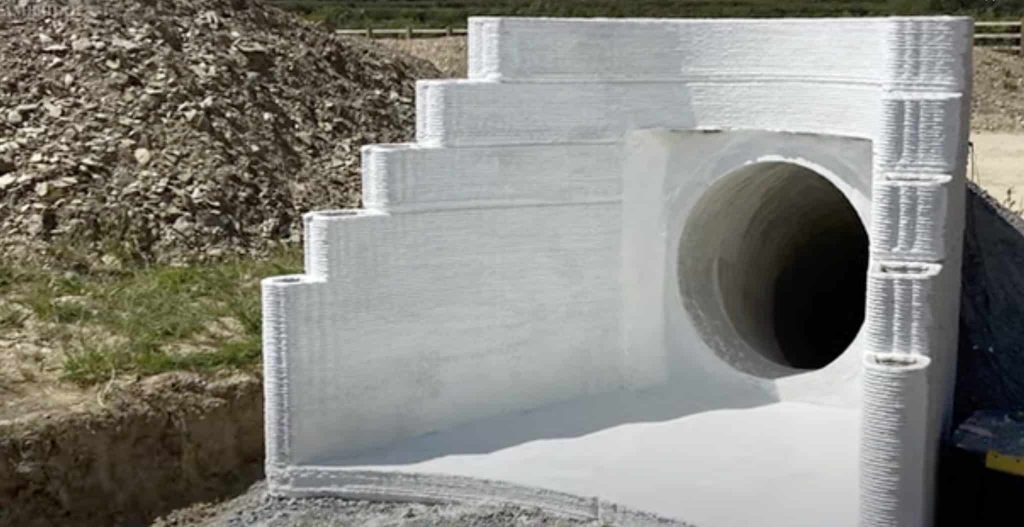The University of Cambridge has taken a significant leap forward in civil engineering by developing a new type of concrete that goes beyond traditional 3D printing capabilities. In collaboration with private industry, they have created a concrete infrastructure unit that not only sets in just an hour but also incorporates advanced sensors, making it self-monitoring and potentially self-repairing in the future.
While the world of civil engineering may not often be a topic of lively dinner party conversation, it is essential to recognize the significance of the structures we encounter daily, like roads and bridges. One such critical element is the headwall, a retaining structure with a hole used to anchor a culvert and prevent erosion caused by running water. Traditionally constructed with time-consuming methods, Cambridge has revolutionized the process by employing a robotic 3D printer arm to lay down layers of quick-setting concrete on-site, significantly reducing construction time.
What sets this innovation apart is the incorporation of cutting-edge technology during the printing process. As the headwall is 3D printed, a lidar unit precisely scans the structure, creating a digital twin for comparison. Additionally, wireless sensors are embedded in the wet concrete, transmitting vital data on temperature, strain, pressure, humidity, electrical resistivity, and electrochemical potential. These sensors are of particular importance since fast-setting concrete generates heat, potentially damaging the structure as it cures. However, the new design eliminates the need for conventional steel reinforcement, relying instead on its own geometry for strength, even with a hollow and curving interior wall.
The study is being led by Professor Abir Al-Tabbaa at the University of Cambridge’s Department of Engineering. He hopes to use this ground-breaking technology to assess the stability of 3D-printed structures and increase their marketability. The team aims to test the sensors’ dependability, resilience, accuracy, and endurance in addition to their cost- and time-effectiveness in construction. Additionally, they plan to use a self-healing concrete technology that is currently being developed.
The project serves as a dynamic living laboratory, generating valuable data throughout its lifespan. With the aid of sensor data and the digital twin, infrastructure professionals can better understand the potential of 3D printing in constructing larger and more intricate cement-based materials for the strategic road network.
In conclusion, the astonishing creation of concrete that can communicate by the University of Cambridge represents a tremendous achievement in civil engineering. The team hopes to transform infrastructure building by using 3D printing, cutting-edge sensors, and digital modeling to create structures that are not only quicker and less expensive to build, but also self-monitoring and possibly self-repairing. This ground-breaking strategy shows promise for the development of infrastructure in the future, ensuring safer, more durable, and long-lasting structures for future generations.

